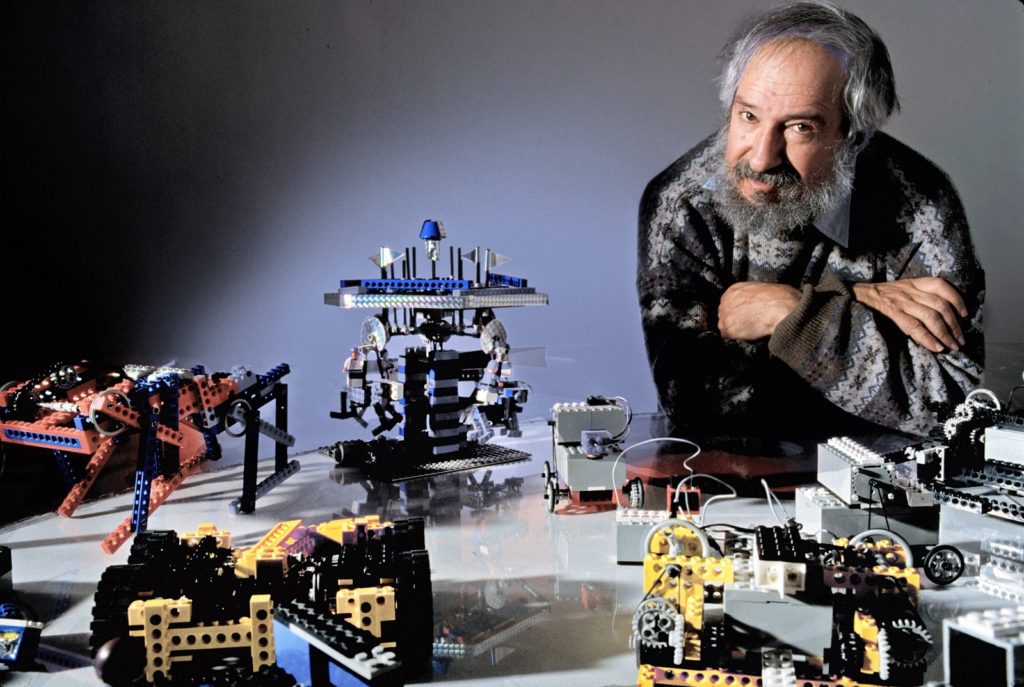
The importance of technology in the lives of children and adolescents around the world is a reality that can no longer be ignored. They have a need to use technology and, without exception, they recognize it as fundamental for their generation. It belongs to them, they know that they can master it more quickly and naturally than their parents or teachers. The main factor that causes them to be so connected with this increasingly developed medium, however, is having the possibility to create and control being the protagonists of their own interests.
The words of Seymour Papert, the father of the maker movement, seemed revolutionary in the 1970s, yet they still endure as a perceptual critique of modern-day schooling. His initiative consisted of evolving to consider the technological needs of children and young people even more, in addition to questioning why its use was being applied in such unimaginative ways. To him, each technological advance corresponded to a new opportunity for transformation, an incorporation seeking to enhance knowledge, as opposed to a use based solely on distraction resulting in the exclusion and abandonment of other personal interests, thus reinforcing that threatening perspective for the integral development of the human being (Mindstorms, The children’s machine, The Connected Family – Papert, 1999a).
“I believe that the great minds in education — the Deweys, Piagets, Montessoris, and Vygotskys — see the same flaw in our educational system. I think the differences between them are absolutely negligible compared to the situation of sticking with the system as it is. But despite having the right idea, like Leonardo da Vinci and his plane, they did not have the necessary infrastructure to implement it. So, are we going to keep using new technology to implement what was already there just because the technology didn’t exist? ”

The organization of the maker movement began in 1985 when the Media Lab started at MIT (Massachusetts Institute of Technology), where technology, design and multimedia development were brought together operating through diverse cooperative projects. Building on the successful inventions that had emerged from this space such as the Lego, Scratch and Makey programmable robotics sets, among others, schools around the world set out to perform an in-depth analysis to consider constructivist theory in learning.In the article “Twenty Things to Do with a Computer (1971)”, Papert and Cynthia Solomon, both creators of the Logos programming language (1968), which consisted of the unification of mathematics and computer science adapted for children (today their versions, together with Scratch, are still the most popular programming environments), proposed a creative use of computers and computer tools, and also highlighted video-game design as a way to learn the main mathematical concepts. Animations and digital simulations improve the understanding of complex topics, as they make it possible to visualize concepts or processes that are difficult to understand in other ways. The unattainable becomes more achievable because they make the abstract content concrete and real.For Papert, the values and activities currently adopted by the maker movement were coherent. He also trusted in the ability of teachers to encourage forms of teaching that incentivize learning by doing.
Technology and Teaching
The global debate, and the observation and recognition of the STEAM methodology as fundamental for new generations, are beginning, but it still requires several adjustments to be applied correctly. Specifying formal ideas through programming, robotics, media production and computer debugging is still seen as an ambitious goal considering the reality faced by most schools around the world.The interesting pedagogical approaches in search of the integration of science, technology, engineering, art and mathematics speak to us of a true learning, shifting the focus from passive consumption towards active invention:
- Maturing of creative thinking
- Creation of projects without the automation of given answers
- Significant projects “with meaning” for each student and adapted to each level of intensity
- Observation and exploration of the limits of objects and their transformation for their own benefit and that of the community
- Digital and physical manufacturing
- Autonomous resolution of possible errors
- Research and collaboration with others
- Learning the world with a scientific perspective
We are accustomed to a schooling system that has a certain resistance to change and retains the obsolete instruction or transmission of a reality that does not permit creation, resolution and analysis. The investment in equipment is a start, but the investment in time for teaching teams to receive beneficial training is the only way, without waiting for them to become experts, that promises a safe and optimistic preparation to work on the mission that will define their role: a guide that encourages offering tools to facilitate invention from scratch, and, above all, allow them to discover and obtain knowledge together with their students, as true technological scientists.In presenting technology in this way, observing the ability to solve problems will be the main objective of the process rather than marking and correcting errors. Many problems are going to appear and it will depend on the attitude and initiative to solve them rather than not really trying and giving up due to shame and frustration, of each person. While being willing to touch, try, risk, and even follow the suggestions of others may lead to something unexpected, only practice brings us closer to the results. When it comes to technology although most children and young people tend to continue persevering until they obtain an answer, there is no fear around its use because there is a freedom of action. They are not only learning to use a program, they are also investigating ways of learning through exploration and self-correction, which enables them to internalize and deepen their knowledge more naturally.The restructuring that marked the unimaginable global pandemic of 2020 meant that schools had no other option but to start using more audiovisual resources and adapt them to their teaching processes. It is a step forward, but does not represent any learning. The objective is to advance beyond these resources, as the same traditional methodology based on memorization and reproduction has been retained, simply adding visual, auditory and graphic means in consideration of a more attractive and closer pedagogical update for students. What is actually hoped for is learning that is not only based on “doing with the hands”, but also on “intellectual doing”.It is a good indicator to believe that this technological implementation and student liberation will be possible for all in the future, starting simply by rethinking the intended use of the computer and making students learn and express knowledge in more exciting ways, with the opportunity to ask questions and seek their own answers, with awareness of their understandings or misunderstandings, developing their autonomy and thus shaping their personal worlds.
Learning is the strongest foundation in a world with such serious problems. The new generation demands another type of education that is more open and dynamic. They themselves have realized that they learn more by doing, when they are recognized as part of the process and especially of the project. In this way they are prepared to be safe, competent and curious, a consequence of the amount of possibilities that are available to them.

About the Author
Fabrizio Amelotti is a Full-Stack Developer with 10 year experience in the IT and software development world. Fabrizio is a technical leader able to move forward a simple idea until the implementation and beyond.


